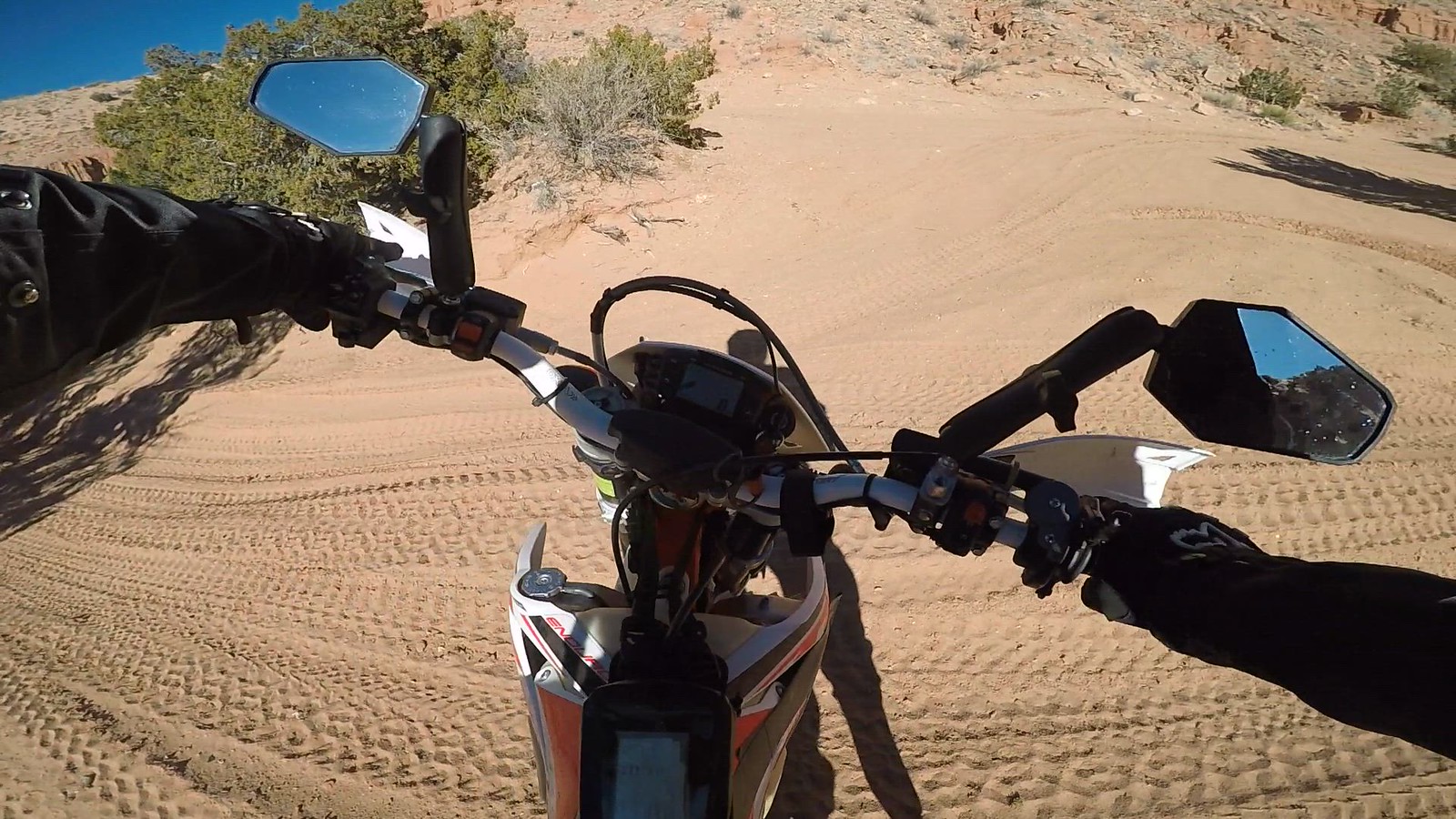TEST RIDE RESULTS
Summary: Adore my bike. I still have 'the problem', whatever is the first cause, but it's currently happening infrequently enough as to not be considered a problem worth bother with.
The universe is rife with irony, so right after leaving the trucks the FIRST thing that happened on the first shut-off of throttle after accelerating was the idle bypass pintle dropped, there was extreme engine braking, and I decided to leave the throttle butterfly shut and just roll to a dead engine stop. I cycled the ignition key and proceeded on while musing about having a frustrating day.
I didn't! Instead, chalk yesterday up to 'great ride' status for me and Gordy. I had only two more episodes, one where I let it die, and another when I kept going wherein the FI sorted itself out and idle returned.
Putting a GoPro remote mic wrapped all up over the airbox to hear the intake was a fail. The mic saturated right away, ruining the sound on some videos, but thankfully the remote mic didn't work on most videos, though it was always
plugged in.
It was cold, with snow and sometimes frozen ground in places in shadow. Here's me ignoring Gordy's cautions about about frozen vehicle-made grooves. After sizing the hill up and getting a run at it, all was well until I turned across the shaded area and could feel the sand and grooves in the sand was frozen. Uh oh! It got skittery and I lost the precious momentum. Getting turned around was a little exciting.
This video hosted by SmugMug; your photos and videos look better here.

buffalodream.smugmug.com
I was really digging my bike all day. Punchy, powerful, stable, and precise. Yummy! Gordy got the courage to ride my 'weird bike' and I appreciate the comment on 'smoothest, plushest, bike like that I've ever ridden.' I got to ride his KTM 300, which was a hoot, what with full knobby rear tire and that great top-end power, was blasting up the dry sand hills no issue whereas if I slowed up bit it was mostly spin.
Gordy saw this little trail and went up. I tried to clean it but got a touch off line:
This video hosted by SmugMug; your photos and videos look better here.

buffalodream.smugmug.com
This video hosted by SmugMug; your photos and videos look better here.

buffalodream.smugmug.com
We rode all kinds of conditions for hours. It was cold, but perfect for pushing hard with a comfortable level of sweat. Things got faster and bolder as the day went on. Thankfully no crashes. Came close once when aborting a very steep climb when I ignored Gordo's warning that being in shade, the ruts were probably frozen. Well they were. When I entered the shade it got steeper and frozen and just past the left turn I lost traction in the rut. That made for a sphincter puckering turnaround:




